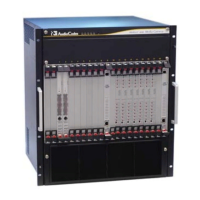CHAPTER2 SNMP Overview
Mediant 800 SBC | SNMP Reference Guide
SNMP Ports
The SNMP Request Port is 161 and the SNMP Trap Port is 162. These port numbers for SNMP
requests and responses can be changed, by using the [SNMPPort] ini file parameter. The valid
value is any valid UDP port number. The default is 161 (recommended).
Multiple SNMP Trap Destinations
An agent can send traps to up to five managers. For each manager you need to define the
manager IP address and trap receiving port along with enabling the sending to that manager.
You can also associate a trap destination with a specific SNMPv3 USM user. Traps are sent to
this trap destination using the SNMPv3 format and the authentication and privacy protocol
configured for that user.
To configure the Trap Managers table, use one of the following methods:
■ Web interface (refer to the device's User's Manual)
■ ini file (see Configuring Trap Managers via ini File below)
■ SNMP (see Configuring Trap Managers via SNMP on page18)
Configuring Trap Managers via Host Name
One of the five available SNMP managers can be defined using the manager's host name (i.e.,
FQDN). This can be configured using the ini file parameter [SNMPTrapManagerHostName].
When this parameter value is defined for this trap, the device at start up tries to resolve the
host name. Once the name is resolved (i.e., the IP address is found), the resolved IP address
replaces the last entry of the trap manager table (defined by the parameter
[SNMPManagerTableIP_x]) and the last trap manager entry of snmpTargetAddrTable in the
snmpTargetMIB. The port is 162 (unless specified otherwise). The row is marked as 'used' and
the sending is 'enabled'.
When using 'host name' resolution, any changes made by the user to this row in either MIBs
are overwritten by the device when a resolving is redone (once an hour).
Some traps may be lost until the name resolving is complete.
Configuring Trap Managers via ini File
In the ini file, the following parameters can be set to enable or disable the sending of SNMP
traps. Multiple trap destinations can be supported on the device by setting multiple trap
destinations in the ini file.
■ SNMPManagerTrapSendingEnable_<x>: indicates whether or not traps are to be sent to
the specified SNMP trap manager. A value of ‘1’ means that it is enabled, while a value of
‘0’ means disabled. The <x> represents a number 0, 1, or 2, which is the array element
index. Currently, up to five SNMP trap managers is supported.
- 16 -

